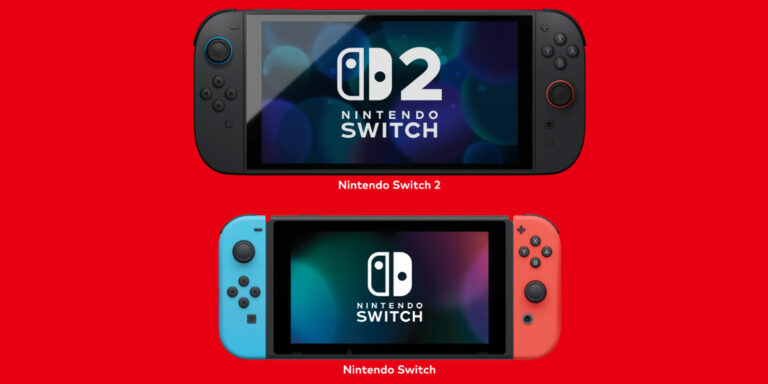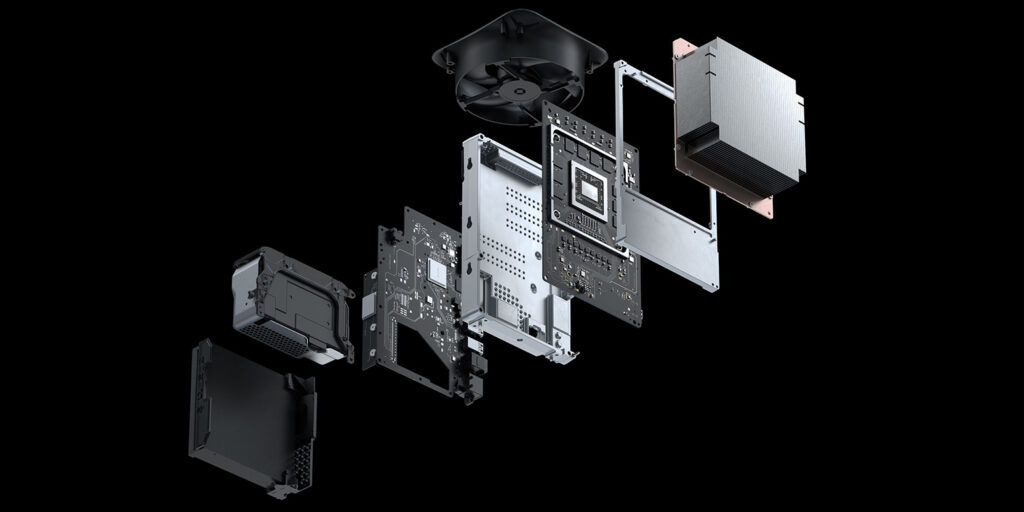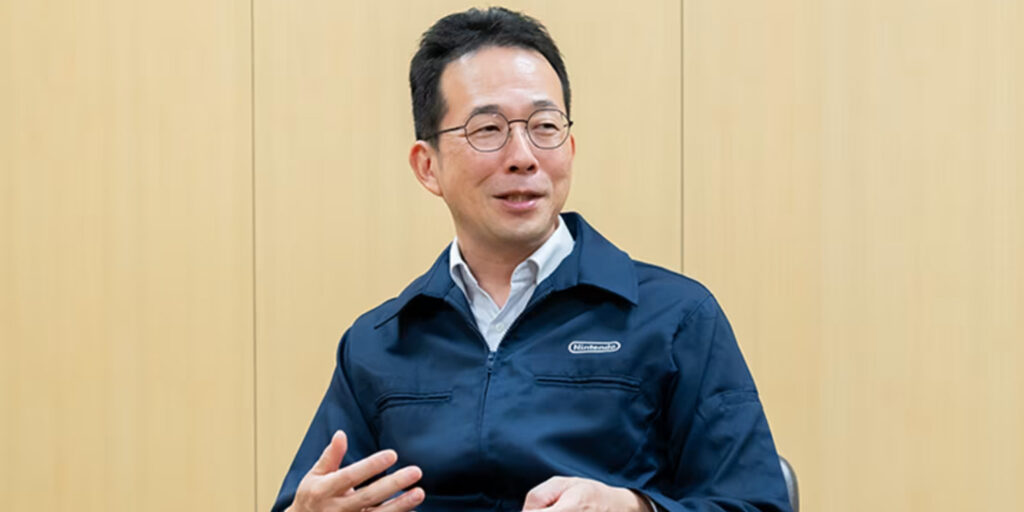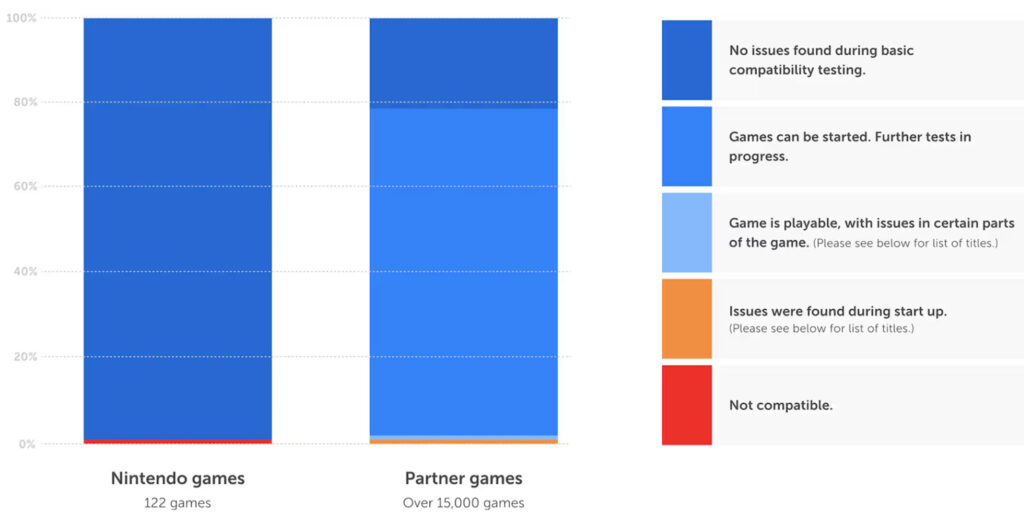Close to 80% of Nintendo Switch Games Not Fully Compatible With Switch 2


Gamers around the world are eagerly anticipating the release of the Switch 2 console set for June 5, 2025, and it’s expected to break sales records across all regions. However, as of this writing, a large majority of Nintendo Switch games are not fully compatible with the new console even though its predecessor has shipped over 150 million units to date.
The main reason for this comes down to how the Switch 2 has been made, as it uses completely different components to the original Switch. As such, around 12,000 Nintendo Switch games won’t automatically run properly on it, as noted by the console’s developers.
“When we first started Switch 2 development, the focus was on enhancing its performance as hardware, namely, expanding its capacity. So, compatibility was a lower priority,” said Takuhiro Dohta, Senior Director of the Entertainment Planning And Development Department, in an Ask The Developer panel interview on the official Nintendo site, on April 4, 2025.
Making sure that Nintendo Switch games work on the upcoming console is obviously not a priority considering that titles on the Switch 2 are expected to cost as much as $80, and the company would rather see players opening their wallets.
“We take an approach of looking at: What is the experience, and what are players going to enjoy out of this game? What is the length of the game, what’s the volume of the experience? How in-depth is it? And then we price appropriately based on what we think the value of that experience is,” Bill Trinen, Nintendo’s Vice President of Player And Product Experience, said in an interview with Polygon on April 7, 2025.
Hardware Limitations And Enhancements
However, what makes the Switch compatibility issue even more glaring is that, these days, it’s a given that any new console will also run games from a previous generation. Usually, this is achieved as a company iterates on an existing console’s hardware so the core technology is similar.
When Sony moved from the PS4 to PS5, it incorporated AMD GPU in both consoles; the PS5 uses a customized AMD Radeon RDNA 2 GPU, as highlighted in a video for Wired by Mark Cerny, Lead System Architect of the PlayStation 5, on Nov. 19, 2021.
This is also true of the move from Xbox One to Xbox Series X, as detailed in a lengthy post on the official Xbox site on March 16, 2020, where Sebastien Nussbaum, Corporate Vice President And Senior Fellow, Semi-Custom Products and Technologies at AMD, revealed that the then-forthcoming Series X would incorporate an AMD Zen 2 CPU and an RDNA 2-class GPU. AMD also provided the main components for previous Xbox consoles, starting with the 360.

However, with the Switch 2, Nintendo are operating more like tech-giant Apple, in that it’s closer to a closed system with minor similarities, thereby necessitating an almost complete overhaul of associated devices (as in how, until recently, new Apple products would need a different charger to previous models).
Dohta, in the panel interview, said: “For example, Nintendo DS games were playable on Nintendo 3DS, and Wii games were playable on Wii U, but it was difficult to achieve the same level of compatibility with Switch 2, because the hardware design approach was different from those systems.”
In clarifying how the Nintendo Switch and Switch 2 differ on a hardware level, Tetsuya Sasaki, General Manager of the Technology Development Division, said in the same interview as Dohta: “Maybe the easiest way to understand it is that the methods used to achieve compatibility between Nintendo DS and Nintendo 3DS, and between the Switch and Switch 2, are completely different.”

This was expanded upon by Kouichi Kawamoto, Producer, Entertainment Planning & Development Department: “Simply put, those systems were compatible because Nintendo 3DS contained Nintendo DS hardware and Wii U contained Wii hardware. However, Switch 2 doesn’t contain any Switch hardware.”
“If we tried to use technology like software emulators,” said Dohta, “we’d have to run Switch 2 at full capacity, but that would mean the battery wouldn’t last so long, so we did something that’s somewhere in between a software emulator and hardware compatibility.”
How This Affects Players
During the panel interview with the Switch 2 developers, they noted that the above software/hardware solution isn’t a complete fix, as it’s entirely possible that many Nintendo Switch games either won’t be covered once the Switch 2 launches this year, or simply won’t function on the Switch 2 at all.
When asked about how the testing is going, Sasaki said, “We’re checking them all, one by one. More than 10,000 games in total.”
On its official website, Nintendo has a Switch compatibility chart that doesn’t go into what exactly constitutes as compatible, but does highlight that nine Switch games require the original Joy Con to play, and that the Nintendo Labo Toy-Con 04: VR Kit isn’t compatible at all with the new console. There is currently no word on whether the Switch 2 will have VR capabilities.

As to be expected, Nintendo has focused on its own games, so out of the 122 in-house original Switch titles, 98% are fully compatible. However, out of the 15,000 Switch games made by other studios just slightly over 20% didn’t display any issues during basic compatibility testing on Switch 2.
The majority of the remaining games, around 12,000 titles, are listed as: “Games can be started. Further tests in progress.”
Combating Compatibility
As Nintendo is clearly aware of the problem, it’s attempting to sidestep it through alternate gameplay methods. One is the proposed ability to transfer Nintendo Switch data to the new console, via a Nintendo Account. Another is the much-touted virtual game cards system.
“If you have two systems, you can digitally eject and load games from one system to another and you can even lend games to members of your Nintendo Account family group,” the company said on its official site.
In short, players can send a digital card of a game to someone else, who then uses that card to unlock and load the game data on their Switch. They’ll have access for up to 14 days at a time, but afterwards will still have that game’s save data on their system.
However, not even all games will be compatible with this system, including titles available through the Switch Online subscription.
We reached out to Nintendo for a comment on the Switch games compatibility concerns without a response.

